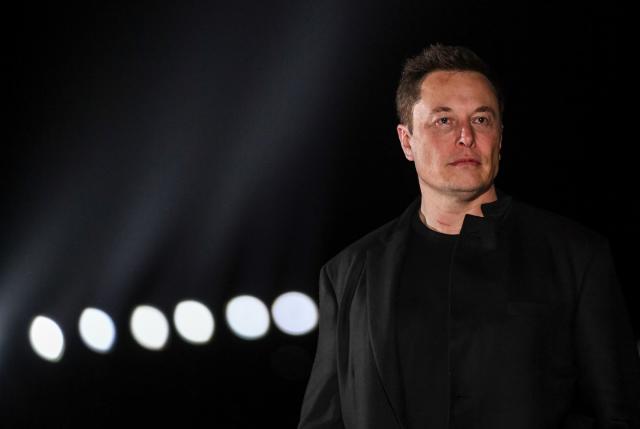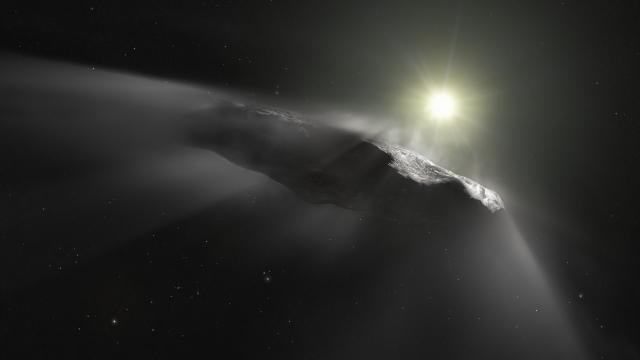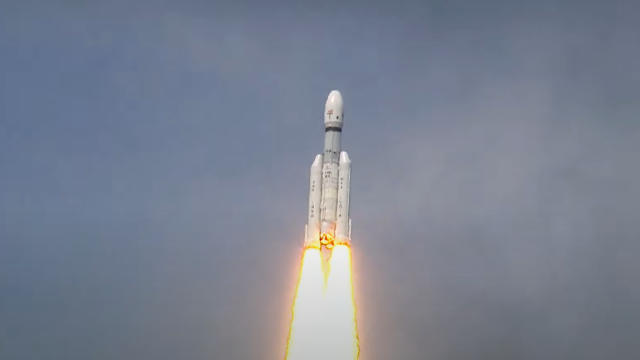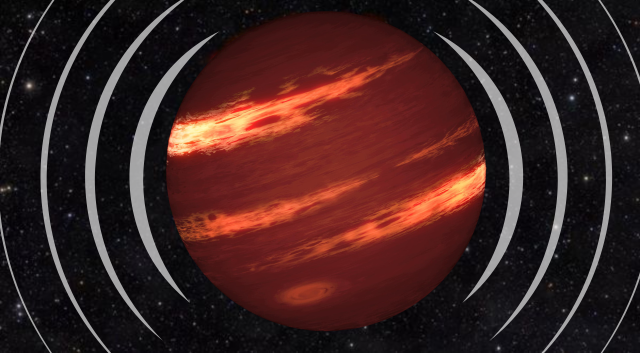Science Daily News | 16 Jul 2023

Views (112)

Do fabled 'dark stars' actually exist? James Webb Space Telescope spots 3 candidates
The James Webb Space Telescope spotted three objects that may be 'dark stars,' or stars that are powered by dark matter. But follow-up work is needed to learn their nature.

NASA's powerful new eye on the universe may have caught sight of dark matter.
Dark stars, if they do indeed exist, may be key to helping us understand how the universe first got light. For about 15 years, scientists have speculated that "dark stars" were among the first our universe ever produced, when it was just 700 million years old.
"There are a set of undetermined parameters that control the formation and evolution of a dark star, and ultimately, its observable properties," the authors cautioned in the study. But they stressed that they had used "plausible values" for the energy of particles of dark matter in building the models for these theoretical objects.
RELATED STORIES:
The three candidate dark stars (known as JADES-GS-z13-0, JADES-GS-z12-0, and JADES-GS-z11-0) may be the target of future JWST observations, to look for "dips or excess of light intensity in certain frequency bands" that may match other predictions for the energy of dark stars.
Europe heatwave: No respite in sight for heat-stricken southern Europe
The heatwave that brought temperatures above 40C across the Mediterranean will intensify next week.

Southern Europe will continue to swelter next week as an intense heatwave shows no sign of abating.
Italy, Spain and Greece have been experiencing high temperatures for several days already.
The Italian health ministry issued a red alert for 16 cities including Rome, Bologna and Florence for the weekend.
The heatwave is expected to continue well into next week, with 48C (118.4F) predicted in Sardinia, according to Italian media.
The European record high of 48.8C (119.8F) was recorded in Sicily in August 2021.
The Italian weather service said the island will be at the "epicentre" of next week's heatwave, which weather forecasters have dubbed Charon, after the ferryman who delivered souls into the underworld in Greek mythology.
"Temperatures will reach a peak between 19 and 23 July - not only in Italy but also in Greece, Turkey and the Balkans. Several local heat records within these areas may well be broken during those days," Italian meteorologist and climate expert Giulio Betti told the BBC.
Italy's government has advised anyone in the areas covered by Saturday's red alerts to avoid direct sunlight between 11:00 and 18:00, and to take particular care of the elderly or vulnerable.
In Rome, tour guide Felicity Hinton, 59, told the BBC the soaring temperatures combined with overcrowding has made it "nightmarish" to navigate the city.
"It's always hot in Rome but this has just been consistently hot for a lot longer than normal," she said.
"My tour guide friends and I are extremely stressed out. People have been fainting on tours and there are ambulances outside everywhere."
Rome resident Elena, 62 told the BBC that she has noticed a "marked change" in summer temperatures since around 2003, and that they have been growing exponentially since.
Meanwhile, Greece has hit temperatures of 40C (104F) or more in recent days. The Acropolis in Athens - the country's most popular tourist attraction - was closed during the hottest hours of Friday and Saturday to protect visitors.
In Spain's Canary Islands, a forest fire that broke out on La Palma on Saturday morning forced the evacuation of at least 2,000 people and has so far destroyed 4,500 hectares (11,000 acres) of land.
Fernando Clavijo, president of the Canary Islands regional government, said at least 12 houses had been destroyed and attributed the quick spread of the fire to "the wind, the climate conditions as well as the heatwave that we are living through".
The Spanish army has deployed 150 of its firefighters to help efforts to bring the fire under control, and assistance is also being sent from the neighbouring island of Tenerife.
Europe's heatwave is set to extend to the Balkans later next week - although several countries, like Serbia and Hungary, are already experiencing daily temperatures hovering around 35C (95F).
Periods of intense heat occur within natural weather patterns, but globally they are becoming more frequent, more intense and are lasting longer due to global warming.
"Heatwaves increase every year in number and intensity... and they are among the most tangible, evident, documented and clearly observable signs of climate change," Mr Betti said.
"European summers have gotten much, much hotter in recent years... What should worry us is that summers without intense and prolonged heatwaves simply don't exist anymore. 'Normal' summers have become a rarity."
Last month was the hottest June on record, according to the EU's climate monitoring service Copernicus.
Extreme weather resulting from warming climate is "unfortunately becoming the new normal", the World Meteorological Organisation (WMO) has warned.
Where did the interstellar object 'Oumuamua come from? Its speed could tell us
The velocity of interstellar objects passing through our solar system, like 'Oumuamua, can be correlated to their chemistry and the type of star they came from.

Astronomers will be able to figure out what kind of stars interstellar objects such as 'Oumuamua come from, and therefore something about their compositions, based on their velocity as they enter our solar system, new research suggests.
However, the properties of their home planetary systems are imprinted on both of them, said grad student Matthew Hopkins of the University of Oxford in England, who conducted the new research and presented it at the U.K.'s National Astronomy Meeting in early July.
"Because they come from other stars, their properties are going to correlate with those stars," Hopkins told Space.com.
Each star is moving around the galaxy at its own pace, and together they form moving groups that are related to their point of origin, which, in turn, corresponds with their intrinsic chemistry.
The populations of stars belonging to each disk have different velocity distributions. Because the ISOs that they eject share a similar velocity as their parent star relative to the sun, they tend to stick to the same moving groups, but these moving groups criss-cross the sun's path all the time.
"The sun is essentially running into them," said Hopkins. This means that we should preferentially expect to see ISOs coming from the "solar apex," which is the direction of the sun's motion relative to other nearby stars.
"'Oumuamua was very close to the solar apex," Hopkins said. "Borisov was slightly farther away but still quite near [to the solar apex], and that's where we expect most of them to come from."
"My results show that the velocity of an ISO correlates with its composition, and because of this we can get a handle on the types of star they may have come from," said Hopkins.
The lower-velocity ISOs (relative to the sun) are expected to come from the thin disk, where stars and their accompanying planetary systems form from gas and dust that contain more heavy elements. The more heavy elements there are in the disk of gas and dust that forms planets and comets, the smaller the fraction of water an ISO will have.
RELATED STORIES:
Could this lack of water explain why 'Oumuamua did not display a cometary tail?
Borisov, on the other hand, was in the middle range for water content based on spectral observations of its tail.
With currently only two examples of ISO, it is difficult to draw too many conclusions. However, once the Vera Rubin Observatory is up and running later this decade, the hundreds of ISOs that it should find will be able to provide a fuller picture of where they are coming from and what their chemical properties are.
"If there's a bias towards ISOs moving similarly to the sun falling into the inner solar system, then we would expect to see more ISOs from the thin disk," said Hopkins.
That might mean we'll see more objects similar to 'Oumuamua rather than Borisov. Only time will tell how correct that prediction is.
What's next for India's Chandrayaan-3 moon rover mission?
India's third lunar exploration mission, Chandrayaan-3, launched on July 14. The mission's lander and rover are scheduled to touch down on the moon in late August.

India's third lunar exploration mission, Chandrayaan-3, has embarked upon its historic and circuitous journey to the moon.
But there's a lot to do before Chandrayaan-3 reaches the moon. Here's a brief rundown of those next steps.
ISRO divides Chandrayaan-3's roughly 40-day journey to the moon into three distinct segments: the Earth-centric phase, the lunar transfer phase and the moon-centric phase.
Phase 1 is now partially over, with the prelaunch and launch and ascent periods completed by liftoff and the separation of Chandrayaan-3 from its rocket. The mission is now in the Earth-bound maneuver stage, which is part of Phase 1.
Chandrayaan-3 will next insert itself into lunar orbit, a move that will kick off the moon-centric phase (Phase 3). The mission will then orbit the moon four times, getting gradually closer to the lunar surface with each subsequent loop.
Chandrayaan-3 can't just head straight from an Earth orbit to landing on the moon. When spacecraft return to Earth from space, they have our planet's atmosphere dragging on them and slowing their descent. But the moon has an incredibly wispy atmosphere, so to make a lunar landing, spacecraft have to slow themselves and make a much more gradual approach.
Chandrayaan-3 will perform an engine burn that moves the craft into a circular orbit around 62 miles (100 kilometers) above the lunar surface. The lander and rover elements of the mission will then separate from the propulsion module.
The lander will touch down in the south polar region of the moon, at a speed of under 5 mph (8 kph). The propulsion module of Chandrayaan-3 will stay in orbit around the moon, remaining in communication with the rover and the lander.
"Landing will be on August 23 or 24, as we want the landing to happen when the sun rises on the moon, so we get 14 to 15 days to work," he said. "If landing cannot happen on these two dates, we'll wait for another month and land in September."
The Chandrayaan-3 lander has its own thruster system, navigational and guidance controls, and hazard detection and avoidance systems.
ISRO has implemented several changes since the Chandrayaan-2 crash. Somanath told the Times of India that these improvements include the strengthening of the lander's legs, increases to its landing-speed tolerance and the addition of new sensors to measure approach speed.
RELATED STORIES:
Once a safe landing has been achieved, it will be time for the Chandrayaan-3 rover to roll out.
The rover is equipped with its own scientific payloads to investigate the moon, including the LASER Induced Breakdown Spectroscope (LIBS), which allows for the analysis of the chemical composition of the lunar surface; and the Alpha Particle X-ray Spectrometer (APXS), which will do the same for lunar rocks and soil around the Chandrayaan-3 landing site.
As the rover goes about its business, the lander that carried it down to the surface will do its own science work. The lander will use the Radio Anatomy of Moon Bound Hypersensitive Ionosphere and Atmosphere (RAMBHA) instrument to measure plasma — a gas of electrons and ions — at the lunar surface and how it changes over time.
Meanwhile, the lander's Chandra’s Surface Thermophysical Experiment (ChaSTE) will measure the thermal properties of the south polar region, and the Instrument for Lunar Seismic Activity (ILSA) will measure the moon's seismicity to help flesh out the structure of the lunar crust and mantle. As this is all taking place, a passive experiment called the LASER Retroreflector Array (LRA), contributed by NASA, will be running in the background on the lander, collecting data that could help scientists better understand the dynamics of the moon system.
'Failed star' is the coldest radio wave source ever discovered
Astronomers have discovered an ultracold brown dwarf, a "failed star" smaller than Jupiter and colder than a campfire that is emitting radio waves.

Astronomers have spotted the coldest star-like body on record found to produce emissions at radio wavelengths.
Scientists have a good understanding of how main-sequence hydrogen-burning stars like the sun generate magnetic fields and radio waves. It isn't as well understood how the internal dynamics of brown dwarfs like T8 Dwarf WISE J062309.94−045624.6 generate radio waves. This mystery is compounded by the fact that only 10% of the known population of these failed stars produce radio emissions.
Researchers suspect that it could be the rapid rotation of some ultracool brown dwarfs that help them generate strong magnetic fields, and when these fields spin at a different rate than the ionized atmosphere of brown dwarfs, this creates an electric current.
In the case of T8 Dwarf WISE J062309.94−045624.6, the radio waves may be created when electrons flow to the magnetic poles of the failed star and give rise to regular bursts of radio waves. Further study of this cool failed star could help finally solve this puzzle.
"Deepening our knowledge of ultracool brown dwarfs like this one will help us understand the evolution of stars, including how they generate magnetic fields," Rose concluded.
The analysis of T8 Dwarf WISE J062309.94−045624.6 that revealed its radio emissions was conducted by the CSIRO ASKAP telescope in Western Australia. This was then confirmed with follow-up investigations by the Australia Telescope Compact Array and the MeerKAT telescope located in South Africa.
RELATED STORIES:
"We've just started full operations with ASKAP, and we're already finding a lot of interesting and unusual astronomical objects like this," head of the University of Sydney School of Physics and research co-author Tara Murphy said. "As we open this window on the radio sky, we will improve our understanding of the stars around us and the potential habitability of exoplanet systems they host."
Musk's new AI company, xAI, will aim to solve scientific mysteries
Elon Musk took to Twitter to talk about his new artificial intelligence company, xAI, outlining a goal of building a super-intelligent AI that could help solve complex scientific and math questions and "understand" the universe. During a live audio event on the social media platform, Musk's team of all-male math, AI and engineering experts spoke about how they wanted to create an AI that was smarter than humans with the goal of benefiting society. Musk said the fundamental goal of the company is

Elon Musk took to Twitter to talk about his new artificial intelligence company, xAI, outlining a goal of building a super-intelligent AI that could help solve complex scientific and math questions and "understand" the universe.
During a live audio event on the social media platform, Musk's team of all-male math, AI and engineering experts spoke about how they wanted to create an AI that was smarter than humans with the goal of benefiting society. Musk said the fundamental goal of the company is to understand "what the hell is really going on."
The event showcased how Musk seems to initially be more focused on answering deep scientific questions, rather than competing head to head with OpenAI, Google and Microsoft to create consumer AI products. Musk did say he saw his venture as an alternative to bigger AI companies but said xAI was still "embryonic," and that it would take time for it to catch up with OpenAI and Google.
The new wave of AI tools has surprised many artificial intelligence experts with their capabilities, and some leaders in the field have moved up their timelines for how many years it will take before an AI creation is generally smarter and more capable than any human. But the current crop of technology works by predicting what image or word to say next, and there is no evidence that they can solve unanswered scientific questions. Many AI researchers say human-level AI may be many decades away, if it ever comes about at all.
Musk said that questions about the nature of dark matter or unsolved aspects of how gravity works could be among the mysteries his company seeks to explain. He spoke at length about the "Fermi paradox" - a theoretical question that asks why humans have not discovered aliens yet and posits that technological civilizations usually destroy themselves, or are destroyed by an outside force, before traveling to other solar systems.
Jimmy Ba, a University of Toronto professor and well-known AI researcher who joined Musk's company, said the goal is to create an AI that can help with a range of problems facing humanity.
"How can we build a general purpose problem-solving machine to help all of us, humanity, overcome the most challenging and ambitious problems out there, and how can we use those tools to augment ourselves and empower," Ba said.
Musk, who has criticized existing chatbots for being politically correct, said his company's AI might offend people because it would speak the "truth."
Musk has been outspoken about AI for years, famously saying in 2014 that inventing super-intelligent computers would be like "summoning the demon" and could create an existential threat to humanity. He helped found ChatGPT-maker OpenAI in 2015 but left the company in 2018 after disagreements with its other leaders. Over the past few months, he has complained about OpenAI and other AI companies scraping Twitter data to help train their bots.
Tesla, the publicly traded electric-vehicle company that Musk is the primary owner of, has a robust AI team who have already worked for years on giving the cars self-driving capabilities. Musk has said his new AI venture will work closely with both Twitter and Tesla. Investors have criticized Musk for using Tesla resources to help his other ventures, especially Twitter.
"We are going to work with Tesla on the silicon front and maybe on the AI software front as well," Musk said, referring to Tesla's custom silicon computer chips. "Obviously, any relationship with Tesla has to be an arms-length transaction because Tesla is a public corporation with a different investor base."
Training the "large language models" that make up the backbone of modern AI tools requires huge amounts of data and stacks of computers to crunch all the information - an extremely expensive process. Tesla has significant computer processing capacity and has used it in its efforts to build self-driving technology.
On the Twitter event, Musk said his company would need computing power but suggested it wouldn't be as much as other companies use. The team would stay relatively small, Igor Babuschkin, a former Google and OpenAI researcher who joined xAI, said.
Musk initially delayed the beginning of the event to wait for more listeners to join. He said he was adjusting Twitter's algorithm so the space showed up for more people. About 34,000 people were listening when it started.
Related Content
0 Likes
